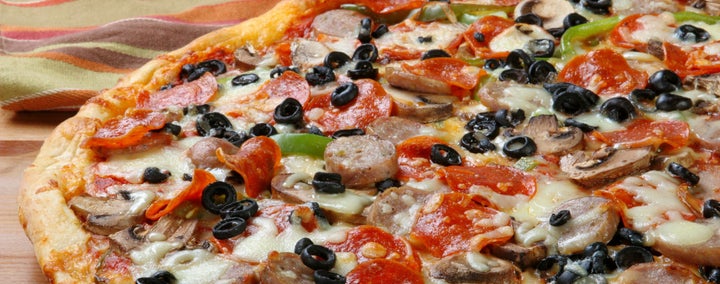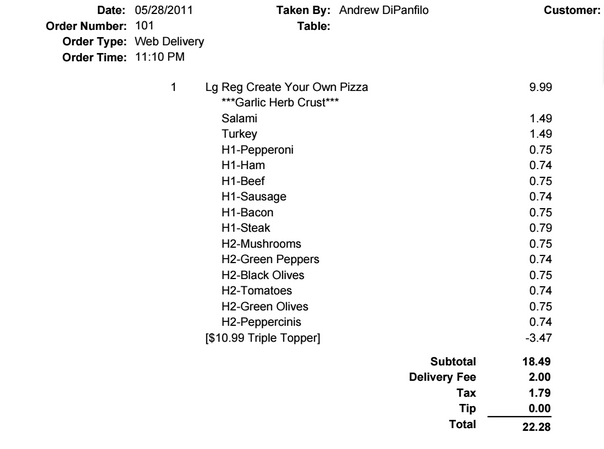What happens when you order a pizza without having to deal with a real live human being? Well, apparently, you order all the toppings.
People consume more calories and spend more money when they order food online and don't have to face the embarrassment of revealing their true pizza desires to a sentient being, according to a forthcoming paper in the journal Management Science.
The study -- from researchers at the business schools of the University of Toronto, Duke University and the National University of Singapore -- confirms something we all kind of knew: We let our guard down online, uninhibited by the social constraints of in-person interaction.
Sometimes that’s a good thing -- many of us turn to anonymous forums for support on issues we can’t discuss with friends and family. It’s why the online pornography business has essentially obliterated all other forms of porn. The blessed cover of anonymity boosted Fifty Shades of Grey; readers could download and read the erotic best-seller without anyone knowing. It’s also why someone will probably say something really nasty about this article in the comments section (go ahead, I dare you).
When it comes to pizza, ordering apps like Seamless and GrubHub allow us to be true to our real desires -- like half-meatball/half-anchovy/double-cheese with pineapple and, hmm, what would happen if I also got mushrooms on that? Most of the time, according to the new study, that's gonna mean getting more complicated, more caloric pies.

"When we think we're free from social judgments, we'll order what we really want," said Ryan McDevitt, an economics professor at Duke’s Fuqua Graduate School of Business who came up with the idea for the study after talking to a childhood friend who owns a pizza chain in North Carolina.
McDevitt's friend said that customers were requesting unheard-of pies online -- the chain was getting at least one or two over-the-top orders a day via the Internet. He agreed to let McDevitt and his co-researchers comb through all the chain’s ordering data from 2007 to 2011 -- about 160,000 orders from 56,000 households. (The chain asked to stay anonymous to protect the apparently much-needed privacy of pizza eaters.)
The researchers were able to compare orders made online and over the phone from the same households. They found that online orders came with 14 percent more special instructions -- combining or dividing toppings -- and had 3.5 percent more calories than phone orders.
Here’s an online order for a garlic herb crust pizza from the North Carolina pizza place:

This is a more typical phone order -- note the restrained three toppings versus the 14 above:

The researchers considered other reasons that people might order more complicated pizzas online. For example, an app or website might make it easier to choose more items. But the pizza chain analyzed here had a very bare-bones website that wasn't much different from its printed menu.
The study also considered the possibility that people were less likely to place elaborate orders over the phone because they were afraid their order would get screwed up or they didn't want to waste the pizza worker's time. But that didn't appear to be the driving factor here. Customers were more likely to order double pepperoni online versus on the phone, even though that's a relatively simple order, McDevitt said.
The latest research comes along at a time when online food ordering is poised to overtake phone ordering. In other words, we're well on our way to becoming our most uninhibited-eater selves.
That bodes well for restaurants looking to increase revenue and cut costs -- online ordering saves on their labor while actually making them more money. As for those of us trying to keep our eating under control, maybe we should stick to the phone.
